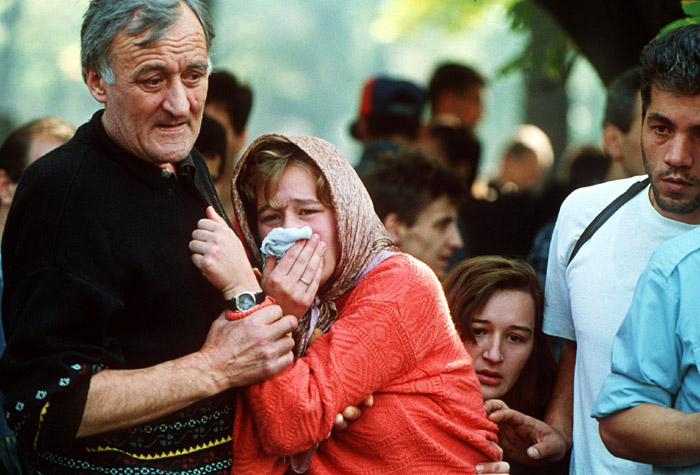
I watched as my husband read from the lectern on the altar the same words he had read that starry night four years before when I had accompanied him out to the desert.
That night we had taken “M’s” ashes and emptied them from out of the plain cardboard box that I had wrapped in a silk scarf—”They just looked so cold and lonely,” I’d told him when I came home from work and noticed.
He’d rehearsed in the hotel room before we went to the funeral and I’d given him pointers.
“Read it slow enough for the words to sink in,” I’d said, and he went back and read it again, from the beginning.
How handsome he looked standing up there at the altar, his silver hair newly trimmed, his jacket dark blue, his shirt with the perfect tie and his voice soft and at the same time sure.
How many years had it been since either of us had been at a Catholic funeral mass? And yet, we stood and knelt and sat on cue and even sang the hymns together—him with his tenor reaching the high notes, me with my alto singing an octave below.
He stood so calm, so strong, so sure that he could read from the lectern those same words as the ones he had read in the desert…and he did, wavering only once.
How good it was for him to have gone to the funeral of “M’s” sister. How good to be in a church with a cathedral ceiling, painted statues, candles, a choir and several dozen people watching, worshiping and holding each other up in their mourning.
How good it was for him to read again the words that he and I alone had heard the night that we’d gone into the desert with only me to hear him as he cast M’s ashes on the ground of nature’s cathedral.
How good it was for him to have been able to take part in that funeral.
10 Reasons to attend funerals:
“Our mourning-avoiding culture has forgotten the crucial purposes of a meaningful funeral.” ~ Alan D. Wolfelt, Ph.D., GriefWords.com
1. Funerals are “traditional…means of expressing the beliefs, thoughts and feelings about the death of the loved one.”
2. They are “rife with symbolism and help us acknowledge the reality of the death.”
3. They “give testimony to the life of the deceased.”
4. They “encourage the expression of grief in a way that is consistent with the values of the mourners.”
5. They provide support and comfort.
6. The collective presence of mourners can help fill the hole that has opened up in the lives of all those left behind.
7. They provide a public forum in which mourners can make a statement about their love for the deceased.
8. They “acknowledge the reality of the death.”
9. They “provide an accepted venue for the painful feelings of the mourners.”
10. They help the mourners to shift their memory of the deceased from physical presence to one of memory.
The new widower came up to me in the church after mass. He was weeping.
We hugged.
“I understand,” I whispered into his ear. “I’m so glad you had this wonderful funeral. It will help you with the waves of grief.”
I have lived with a man who has had such waves of grief wash over him for the past four years, having in fact felt the tug of undertow even as he read at the lectern that morning. He, however, hadn’t had the benefit of a funeral—his late-wife requested that none be held—and I have watched as he was left adrift without all the benefits that a funeral has to offer.
On the way out to the car after the funeral, he took my hand and held it deeply.
“I’m glad you insisted that I take part in this funeral,” he told me. “While it wasn’t for “M,” being able to read out loud before her sister’s family the very words I had read when I spread her ashes gave me a sense of closure I hadn’t had before.”
It was as if for him, the funeral was a funeral-of-sorts for his late wife as well; one that went beyond the quiet spreading of her ashes with only two people present.
I knew deep down inside that, just like the new widower who had approached me after the funeral mass, my husband was right, he too would feel better having gone to the funeral.
Author: Carmelene Siani
Editor: Catherine Monkman; Travis May
Image: Wikimedia Commons






Read 5 comments and reply